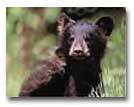Weiminuche Wilderness
by Scott Cundy
The Weminuche Wilderness Area is the largest roadless area in Colorado. It is home to three fourteeners, a slew of thirteeners and countless high alpine traverses. Its borders span the distance from Wolf Creek Pass, west to Silverton and highway 550. An extensive trail system intersects the Weminuche and includes an 80-mile section of the Continental Divide Trail, as well as the Colorado Trail.
Home to the last confirmed grizzly bear sighting in Colorado in 1979, the San Juans remain the long debated habitat for the “Ghost Grizzlies,” the officially unconfirmed Colorado grizzly population. Many experts and amateurs believe remote pockets within the Weminuche could still possibly hold these mysterious Ghost Grizzlies and the debate goes on today. Along with ghost grizzlies, black bear, elk, mule deer, mountain lion, coyotes, marmot, big horn sheep, mountain goat and many, many other species of bird and animal still inhabit the Weminuche. But, as the area is impacted more and more by human recreational and developmental pressure, the homes of these animals become increasingly at risk.
 Visitors are urged to tread lightly and practice no-trace wilderness techniques in the area — a show of respect to the beauty and magic of a place like the Weminuche. It is important to remember that we’re only visiting — the animals have nowhere else to go.
Visitors are urged to tread lightly and practice no-trace wilderness techniques in the area — a show of respect to the beauty and magic of a place like the Weminuche. It is important to remember that we’re only visiting — the animals have nowhere else to go.
From Pagosa Springs, the Weminuche is easily accessible. From day hikes to backpacking trips, from valley hikes to alpine traverses, it surrounds us to the north and west. Pagosa Peak, 12,640 feet, is the most common peak to climb and offers wondrous views in all directions. From Wolf Creek Pass, one can hit the Continental Divide Trail and head north into the Weminuche where several alpine lakes are within a day’s travel. North of town, Four Mile, Anderson and Turkey Springs trails lead to lakes below timberline, where camping is warmer and alpine terrain is still within day hike range.
West of town, at the end of Piedra Road, Cimmarrona, Williams Creek and Hossick Creek trails climb the 3500 vertical feet up to the Continental Divide, where alpine hiking abounds. There are also two natural hot springs in the Pagosa area, both accessible on day hikes. And, on top of these access points and destinations, one can always get a local’s opinion on favorite spots (if they’re willing to relinquish them).
The next best way to find some special spots, however, is to buy a map, pack your bags and plan a thru-hike into Silverton, Lake City or Creede — or into Pagosa Springs coming from the west or north. Thru-hiking is more adventurous and committing than normal backpacking and oftentimes, takes you to places you otherwise might not see. There are few things as fulfilling as hiking for long days across steep, wild mountains into towns that teeter on the fringe of the word “civilization.” In the Weminuche, it’s possible.
